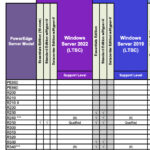In the realm of React and Next.js development, ensuring application robustness and reliability hinges on comprehensive testing strategies. Various testing methodologies cater to different facets of your application, each playing a crucial role in delivering a high-quality user experience. This article provides a detailed exploration of testing types and prevalent tools specifically tailored for testing your Next.js application’s server-side functionalities.
Types of Testing for Next.js Server-Side Applications
To effectively test your Next.js applications, especially the server-side aspects, understanding the different testing types is paramount. Each type offers a unique approach to verifying the behavior and integrity of your code.
Unit Testing: Isolating Server-Side Logic
Unit testing focuses on examining individual units of code in isolation. Within the context of Next.js server-side applications, a unit could be a function responsible for data fetching, API route handlers, or any server-side utility function. The goal is to ensure each of these units performs as expected in complete isolation, without dependencies on other parts of the application.
- Component Testing (Server Components): While traditionally associated with client-side React components, component testing extends to Next.js Server Components. It involves verifying how these components render on the server, how they handle props, and their server-side behavior. Tools like React Testing Library, when configured appropriately, can be used to assert the output of Server Components in a server-like environment.
Integration Testing: Bridging Client and Server Interactions
Integration testing moves beyond individual units to assess the interactions between different parts of your Next.js application. This is particularly relevant for server-side testing as it validates how server-side logic integrates with databases, external APIs, and even client-side components that depend on server-rendered data. For instance, testing an API route handler that fetches data from a database and serves it to a client component falls under integration testing.
End-to-End (E2E) Testing: Simulating Real User Flows Server-Side
End-to-End (E2E) testing takes a holistic approach by simulating complete user workflows within an environment that closely mirrors production. For Next.js server-side testing, E2E tests are invaluable for verifying server-rendered pages, API routes handling complex interactions, and overall application behavior from a user’s perspective. Tools like Cypress or Playwright allow you to automate browser interactions and assert the server’s response to user actions, ensuring critical server-side functionalities are working correctly in a realistic scenario.
Snapshot Testing: Tracking UI Changes on the Server
Snapshot testing is a technique that captures the rendered output of a component or a server-rendered page and saves it as a “snapshot” file. Subsequently, during test runs, the current output is compared against the saved snapshot. This is useful for detecting unintended changes in server-rendered UI or data structures. While primarily used for UI components, snapshot testing can also be adapted to server-side rendered outputs to quickly identify regressions in server responses or page structures.
Async Server Components and Server-Side Testing Strategies
The introduction of async Server Components in React and Next.js necessitates a nuanced approach to testing, especially on the server side. Given that some traditional testing tools are still evolving to fully support async Server Components, focusing on robust server-side testing strategies becomes even more crucial.
For async Server Components, End-to-End Testing often emerges as the most reliable method. E2E tests can effectively simulate the asynchronous nature of these components and validate their behavior within a realistic server environment. While unit testing async Server Components might present challenges with current tooling, E2E tests provide a practical way to ensure their correct server-side rendering and functionality.
Tools for Server-Side Testing in Next.js
Several tools are well-suited for testing Next.js applications, particularly focusing on server-side logic:
- Jest: A popular JavaScript testing framework that can be used for unit and integration testing server-side functions, API routes, and utilities in Next.js.
- React Testing Library: While primarily known for component testing, it can be adapted for testing Server Components by setting up a server-like rendering environment.
- Cypress & Playwright: Powerful end-to-end testing frameworks ideal for simulating user flows and verifying server-rendered pages and API interactions in Next.js applications. They allow for comprehensive testing of server-side functionalities from a user’s perspective.
- Supertest: A library specifically designed for testing HTTP APIs, making it excellent for integration testing Next.js API routes.
By strategically employing these testing types and tools, you can establish a robust testing pipeline for your Next.js applications, ensuring the reliability and performance of your server-side functionalities and delivering a superior user experience.

